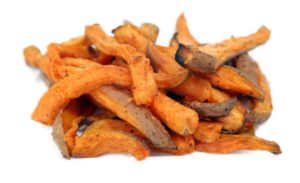
I’m far from a pure paleo disciple. I think it’s great that ancestral nutrition is being studied, and as an easy to understand, off-the-shelf weight-loss “diet,” it’s darn good. But I fret that it may throw the baby out with the bathwater by removing foods for which individuals haven’t yet identified sensitivities. Those who are lactose tolerant, for example, should think twice before they jettison milk and Greek yogurt. And it’s safe to assume that 90 year olds eating pizza can handle gluten. But overall I think the diet has value, and contributes to the overall nutrition conversation.
Before taking ill, I had already been sorta following this template, partly to self-experiment. I was far from strict. I still hadn’t abandoned dairy, caffeine, alcohol, or the occasional dessert, nor do I plan to. (You’d be right to call my diet “primal” or “paleo-ish” as opposed to “paleo.”) I had observed better appetite control, energy levels, and gut health, but had difficulty gaining muscle. I’m no bodybuilder, but I try to avoid the Gandhi look.
My weight stayed stubbornly low. Poor me, I know. Textbook humble-bragging. “Darn, it’s so hard to gain weight eating all this steak!” Obviously, guilt-free weight gain would be fun. But it’s not like Renee Zellweger bulking up with ice cream to play Bridget Jones. I was trying to stay paleo-ish, which is wildly impractical. Preparing meals is time consuming. Eating out is difficult due to added oils and sugar. And selecting restaurants takes research because I have impossibly high standards for animal welfare. I basically believe animals I eat should be pampered to death. “This chicken died on the massage table? Okay, you may roast him.”
Once my energy returned, I slowly got back to training normally, which demanded even more calories. I kept trying to increase portions but there was only so much meat I could eat. It’s very filling, especially in a shrunken tummy. Starchy vegetables provided easy carbohydrate, but my busy schedule often meant little time for baking sweet potato fries. In fact, ultra-strict paleoistas even exclude tubers partly due to the preparation methods which would have been unavailable to cavemen. When these extremists start talking, I nervously smile and slowly back out of the room.
 |
| Instructions: 2 pounds of farmer’s market sweet potatoes. Slice, chop, or cut lengthwise. Mix in bowl with coconut oil or butter, salt, and spices. Bake at 400º for 30 min. |
Does this mean the diet works? Not necessarily. To succeed, a diet must be followed. Extreme restriction can lead to poor compliance. An individual might avoid grains for weeks then have a “fuck it” moment and eat a slice of pizza, followed by the rest of the pizza because he feels he already blew his diet, and then a weekend of “I’ll get back on track on Monday.” This individual would be better off indulging more frequently, in moderation, to help prevent binges.
Just like our amylase gene, the mainstream versions of the diet have evolved. Variations like The Perfect Health Diet and Your Personal Paleo Code view it more as a starting point from which to then begin adding. By introducing “safe starches” like rice and oatmeal to pick up the caloric slack, compliance may be easier. Organic oats aren’t pure paleo, but they’re not Big Macs either.
